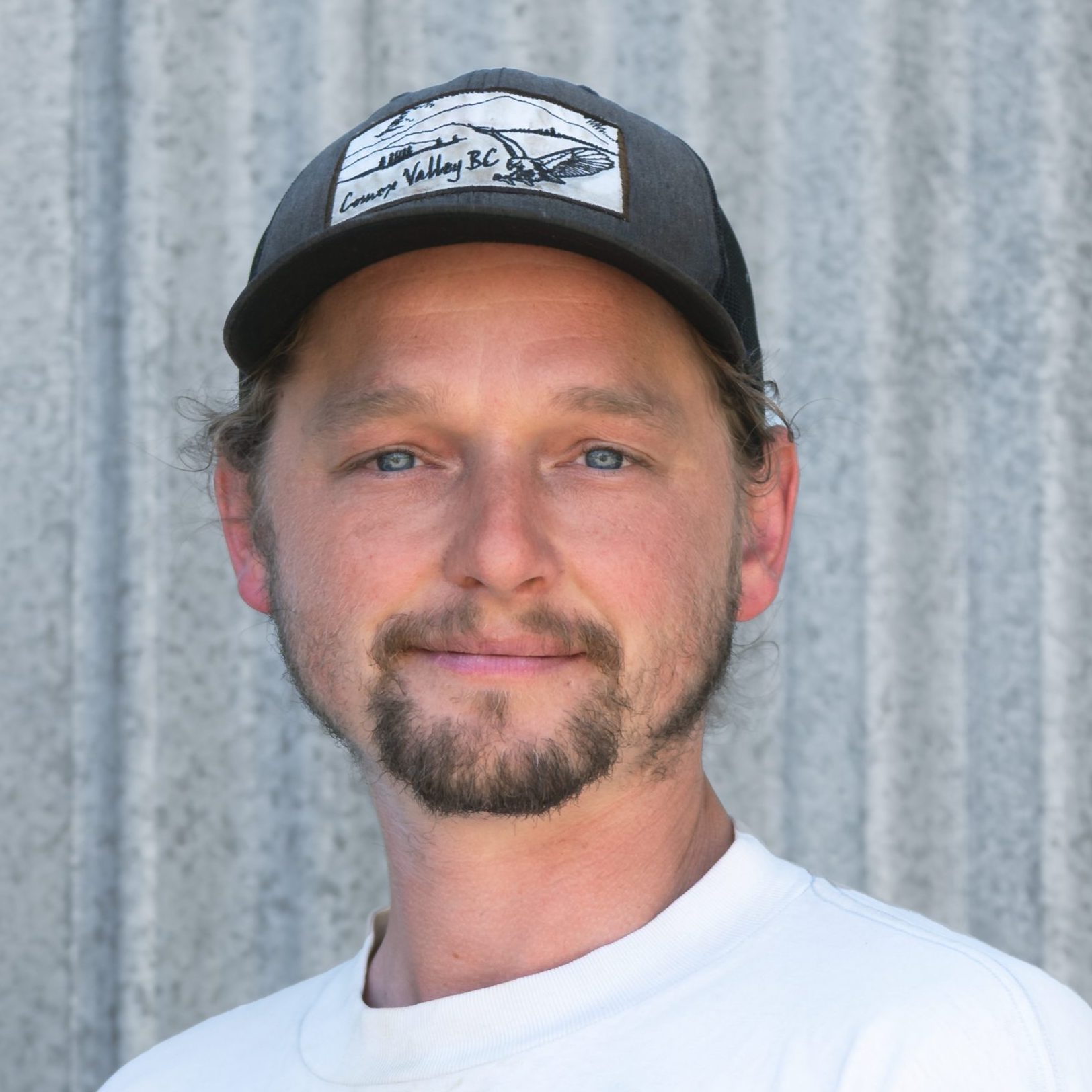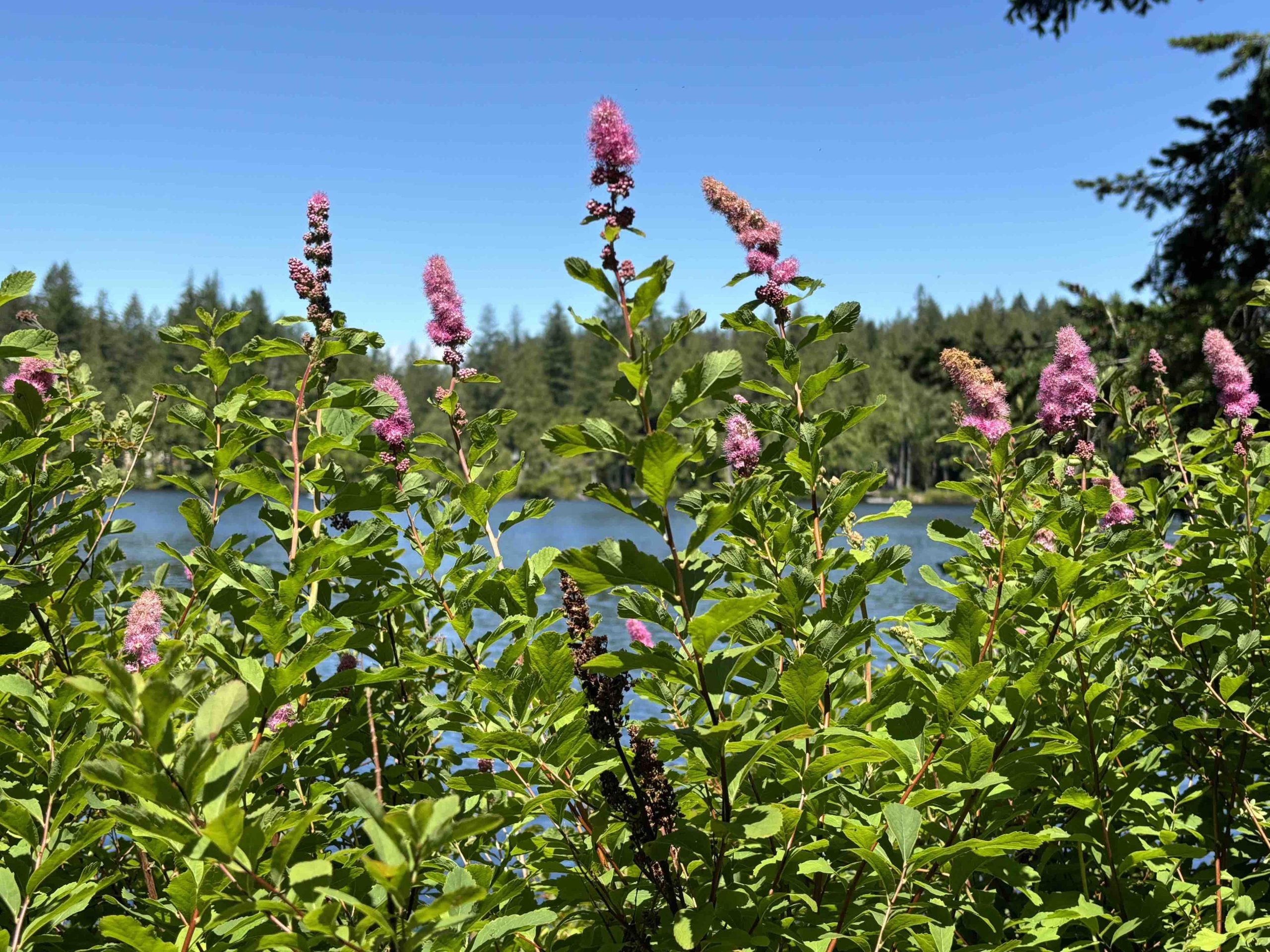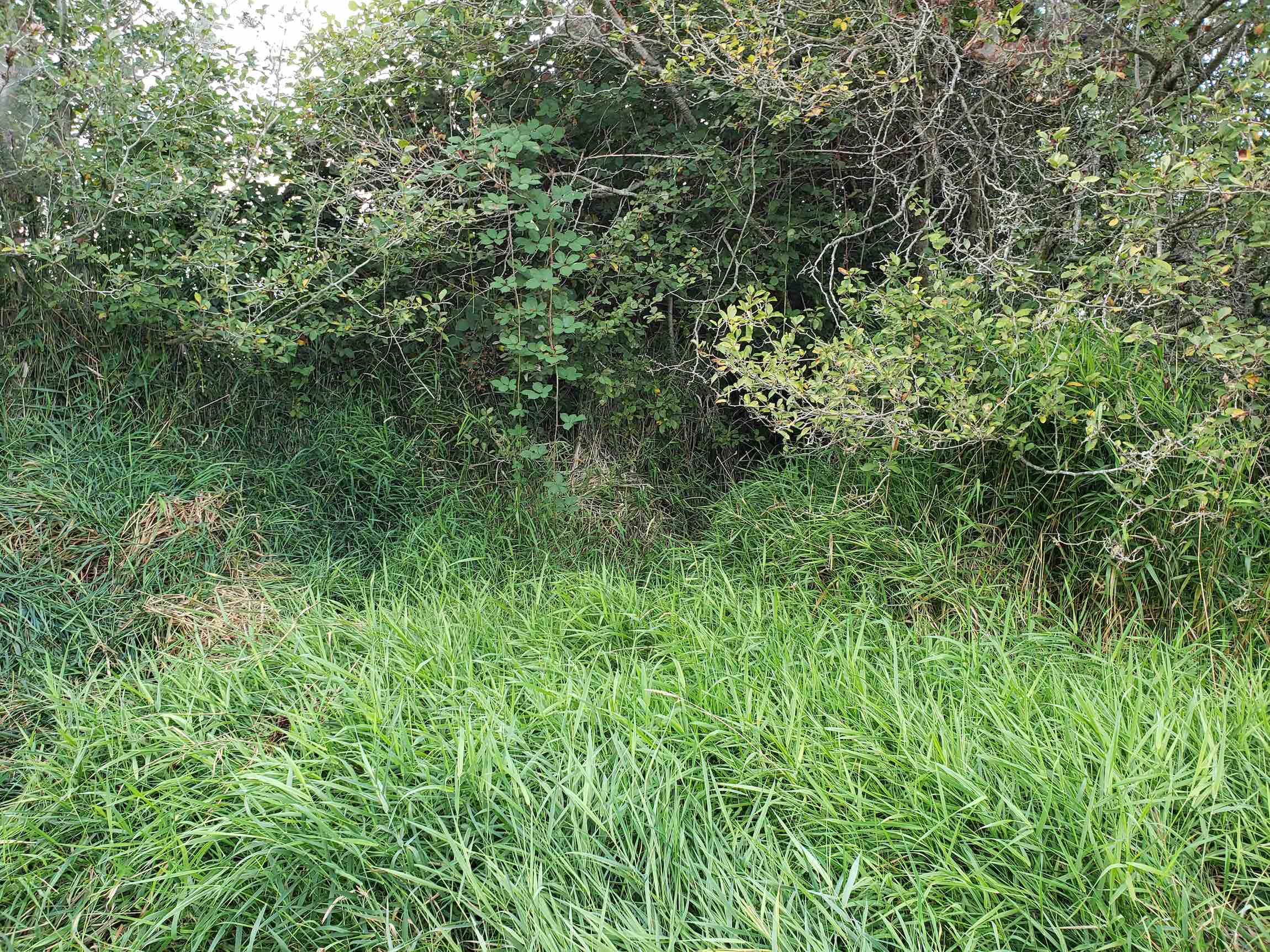Mallard Creek Restoration Update for 2024
Douglas hardhack (Spirea douglasii) ~ Elena Fraser
Reed canary grass at Mallard Creek 2019 ~ Dan Bowen
Mallard Creek with native grasses returning ~ J. Baker-French
Restoration work in Mallard Creek will continue this year, following the pattern we laid down starting in 2019. The first step will be to use an excavator to lift the floating mat of invasive reed canary grass out of the channel. This will be done during the seasonal low-flow for the year, in mid to late August. Following removal of the floating mats, we will install heavy paper mulch over the piles and remaining reed canary grass growing on the banks of the stream in preparation for planting native riparian species later in the year (keep your eyes peeled for volunteer events starting in September). This mulch will suppress the grass while native species establish.
We will be trialing a new planting method this season, using a native shrub, Douglas hardhack (Spirea douglasii – see photo for reference). This is one of the few native species that can compete with reed canary grass in open, full sun conditions. It also provides many benefits to the ecosystem including bank stabilization, organic matter production, forage for pollinators, and songbird habitat.
Opening up the channel of Mallard Creek provides important off-channel habitat for rearing juvenile salmonids using the Dyke Slough system, which connects to Glen Urquhart Creek. Last year we saw coho salmon and coastal cutthroat spawning in this stream, and yearlings were present in protected areas with good riparian cover and deep pools. More of this critical habitat is created when we continue our work removing reed canary grass and replanting the native riparian buffer along Mallard Creek. Eventually, our goal is to remove barriers to fish passage further upstream, which may eventually allow salmonids to establish runs in this stream.
Point of interest: we had beaver activity on our project site! One or more of these industrious rodents decided to dam up the culvert that connects Mallard Creek to Dyke Slough, at the downstream end of our project area. This dam raised the water table appreciably, creating a deep pool upstream of the culvert and inundating the banks where our willow stakes are growing, creating a well-vegetated (though short-lived) wetland. Unfortunately, the farm lease holder needed to remove the dam to allow field work to occur on the surrounding farm fields. The ecological benefits of beaver activity are well known, but finding ways to accommodate beaver activity and other land uses can be a challenge. Project Watershed and Ducks Unlimited Canada (the property owner) will be discussing beaver accommodation methods that could be deployed on the site to allow coexistence between farming and beavers.
If you are interested in coming out and contributing to this project, watch for volunteer events starting in September.
Information for post provided by:

Jay Baker-French
Biologist | Assistant Program Coordinator




